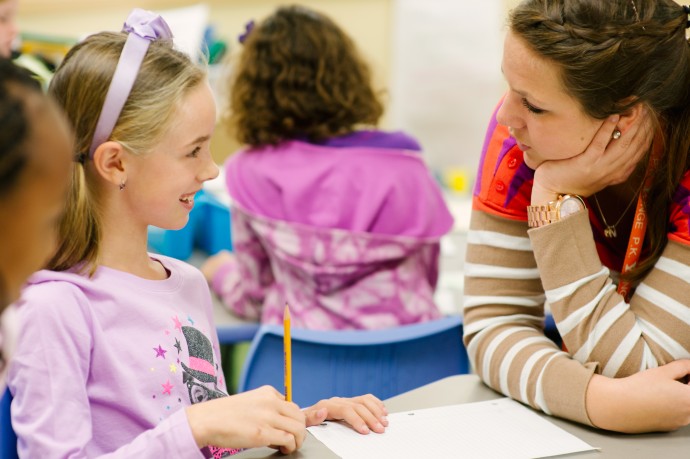In a recent post we deconstructed the term discipline and foregrounded Fred Rogers’s focus on the teaching-learning relationship that is at the core of the word, and how that might look in a caring school community.
Based on this thinking, here are seven best practices we believe should be at the core of every school discipline program:
1. Build caring and supportive relationships.
Effective discipline relies on mutually respectful and caring relationships. Students need to know that their teachers and other adults truly care about them.
They need to feel held by a web of supportive relationships among all parts of the school community. Sadly, as we know, socially isolated students are more likely to engage in problem behaviors.

2. Provide a calm, caring, orderly learning environment.
Not unlike the cute bear cubs and elephant calves featured in those nature documentaries about how animals raise their young, children have a hard-wired need to feel safe.
Establishing school as a calm, orderly microcosm where students see adults modeling appropriate and setting clear boundaries every day helps nip nascent behavior issues in the bud.
3. Seek out solid research.
An effective discipline program is undergirded by solid research. Did you know that numerous studies have proven that extrinsic rewards undermine performance? Or that research shows what we all know from our own observation and intuition––that regular opportunities to move promote children’s mental clarity, learning, and physical and brain health? Make sure your approach to discipline is based on reliable data.
4. Use developmentally appropriate, engaging curricula.
A chronically bored kid is a discipline issue waiting to happen. Does your curriculum match your students’ current stage of cognitive development? Does it whet their curiosity to learn? Does it provide opportunities for them to actively construct knowledge, both on their own and in partnerships and groups?
If so, you already have fewer discipline issues than teachers who assign one stupefying worksheet after another, or who behave like the adults in Charlie Brown’s world, lecturing away while the children merrily or resentfully tune out the details.
5. Employ restorative justice principles.
An approach to discipline based on the philosophy of restorative justice emphasizes helping students take responsibility for hurtful conduct and repair harm caused to others.
Students remain fully integrated into the caring classroom and school community as they learn, grow, and change, rather than being banished for problematic behavior. They come to understand the effects of their behavior on others, develop a sense of responsibility to others, learn positive alternatives to dysfunctional behavior, and build internal regulation and control.
6. Be proactive—identify typical problems and productive responses.
Know up front what might come up and what strategies you can use to deal with it.
With your colleagues, brainstorm common misbehaviors from the serious to the merely annoying. Identify two or three levels of intervention for each behavior, so that if and when a student exhibits a particular behavior, you can address it using the lowest level of intervention and proceed to the next level only if the behavior continues.
Let’s say a student behaves in an aggressive way. A low-level intervention might include making it clear that aggression is unacceptable, providing a choice of appropriate behaviors, helping the student articulate her feelings, and helping her apologize to anyone harmed by her behavior.
A higher-level intervention might include documenting the problem and then meeting with the student and other adults in the school community, in order to help the student develop needed behavioral skills. Follow-ups could include continued monitoring and support of the student, along with progress assessment.
7. Be patient—with the students, and with yourself.
Adults in the school community need patience with themselves as they work out the kinks of an effective discipline approach.
And even as we hold our students to high standards, we need to demonstrate patience toward them too, as they learn and practice norms, rules, and procedures; make mistakes and make amends; and most importantly, internalize the self-discipline that will set them up for success in whatever they take on, in school and beyond.
***
Read other blog posts about social and emotional learning.
